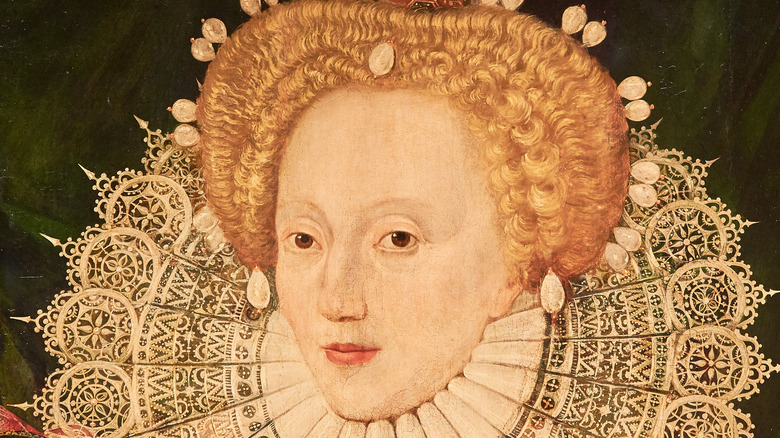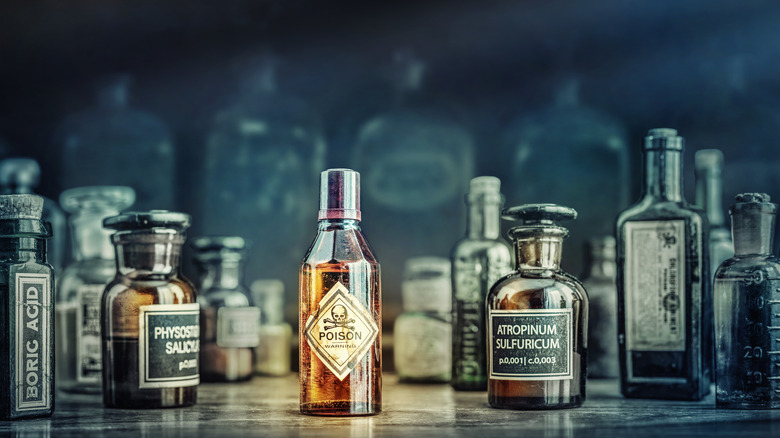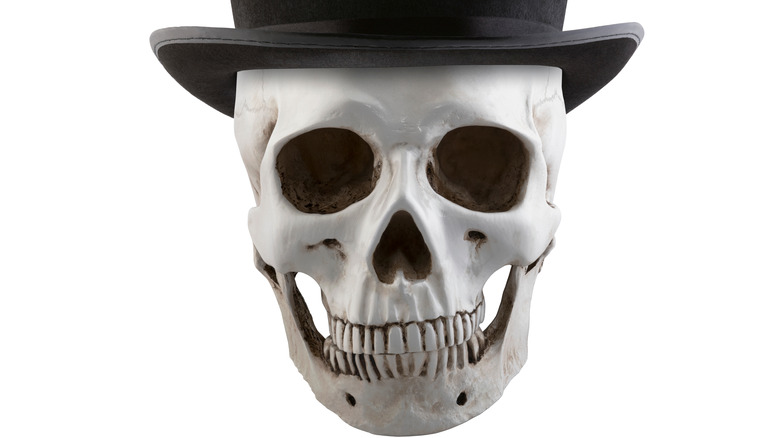The Deadly Cosmetic Trends Women Once Relied On
They say beauty is pain, but it shouldn't be deadly. Unfortunately, a lesson learned the hard way. For centuries, cosmetics have been used to augment beauty. For example, according to National Geographic, both men and women in ancient Egypt used black and green eyeliner.
They believed it would prevent illness and evidence shows that it more than likely did. However, the eyeliner was made with lead, and thus would have caused health problems. Ancient Egyptians, however, generally did not live past 30 and so, they did not experience the ill effects.
The use of lead in cosmetics was quite popular in the 17th, 18th, and 19th centuries. Per The Cut, it helped women achieve a pale look and smooth skin (both popular at the time). Of course, this meant that people using these lead-laced products were slowly being poisoned. Most famously, Queen Elizabeth I used cosmetics containing mercury, arsenic, and lead (via Quick and Dirty Tips). Many believe this was ultimately the cause of her death.
Belladonna or deadly nightshade is a toxic plant that was used as eye drops (per History Collection). It would dilate the pupils to create a seductive doe-like appearance. Likewise, it would cause visual distortions and kill you after prolonged use. Possibly the most disturbing trend was the use of radioactive materials in a variety of beauty and health products (via Insider).
Discovered in 1898 by Marie Curie, radium, a radioactive element, was used in soaps, toothpaste, lipsticks, and other makeup products (via History Today). With its green glow, it was advertised as "liquid sunshine." Of course, the use of these products could cause radiation poisoning and death. According to Biography, it killed Marie Curie after years of exposure.
Makeup wasn't the only thing that was killer
Clothing in the 19th century was, unfortunately, both flammable and poisonous (via National Geographic). Oddly enough, it was a pretty common way to die. Women wore tulle and cotton dresses. As homes were lit by candles, oils, and fireplaces, disaster and death could easily occur. In addition, women wore celluloid combs in their hair and these would often explode if they got too hot (yikes!).
Arsenic was not only used in makeup, it was also in household items and clothing. Candles, curtains, and wallpaper all used arsenic. Most iconically, when fabric was dyed with the poison, it turned a brilliant green shade referred to as emerald green (per Racked). This shade became especially popular for its time and it was used in shoes, gloves, and artificial flower wreaths.
This resulted in rashes, ulcers, scabs, blisters, and sores for the wearer. Hair could also fall out before causing the liver and kidneys to shut down, leading, of course, to death. These effects would also be felt by the maker of said clothing or products.
In 1861, 19-year-old Matilda Schuerer (whose job involved dyeing fake flowers with arsenic), died as a result of her exposure to the poison. Her bile, vomit, and the whites of her eye were all green. By the late 1800s, arsenic-laced fashion was phased out and replaced by alternatives. To this day, the shade has a negative reputation among seamstresses (via Kvadrat Interwoven).
Death by fashion didn't only affect women
In "Alice's Adventures in Wonderland," the Hatter is a character that is unpredictable and eccentric (via History). The term "mad as a hatter", however, does not originate from the 1865 book. Instead, it was inspired by real-life as hat makers were exposed to mercury (per National Geographic). Thus, according to Hat Realm, those in this profession were poisoned for over 100 years as they created high-quality hats.
In the 18th and 19th centuries, hats were made with animal fur. Using a process called carroting, manufacturers would use mercury to form this fur into felt (via Connecticut History). As a result, hat makers would be exposed to mercury through this process and by the vapors and dust. Through the course of their careers, they would slowly be poisoned.
Hat makers developed both neurological and psychological symptoms. They would lose their teeth, drool, tremble, twitch, hallucinate, and much more. Perhaps no other city felt the effects more than Danbury, Connecticut.
Once known as the "hat capital of the word," the hat makers of Danbury referred to the trembling as the "Danbury Shakes." In 1860, mercury poisoning of hat makers was noted for the first time in medical literature. However, because it affected only the workers and not the public (those who wore the hats were protected by the hats lining), the Connecticut State Board of Health did absolutely nothing.
With the help of Dr. Alice Hamilton, the conditions of hat factories became well-documented. By 1941, Connecticut banned mercury in hat-making and used hydrogen peroxide as an alternative. Nonetheless, mercury can still be found on the grounds and nearby rivers of Danbury where the hat-making factories once stood.


